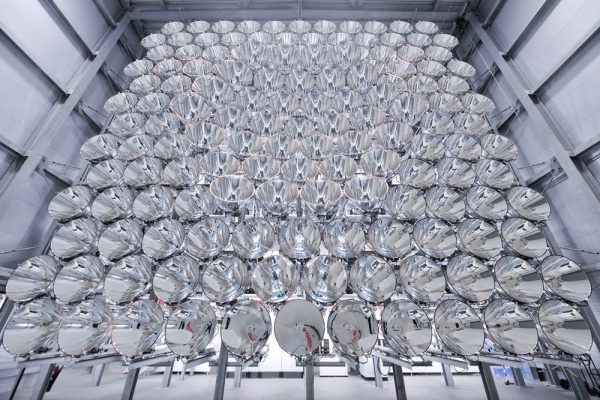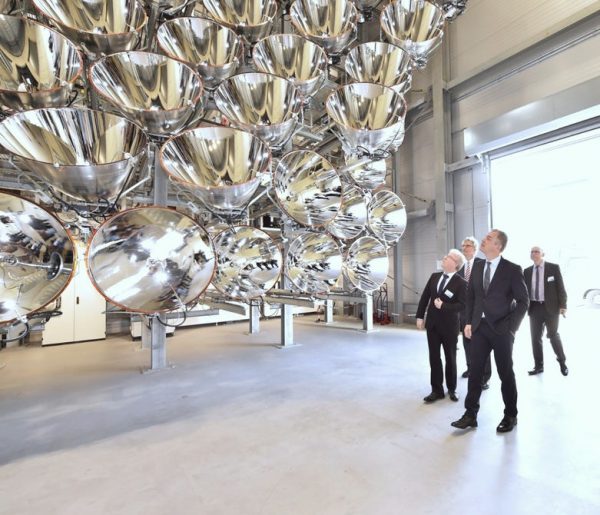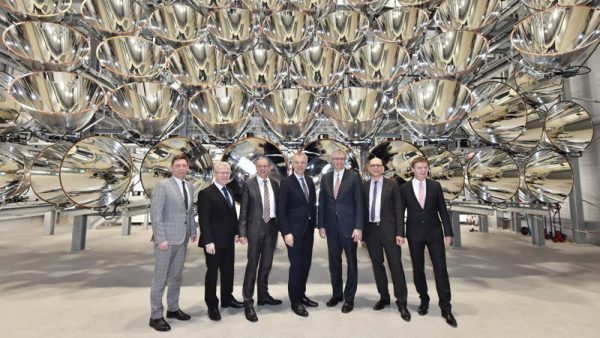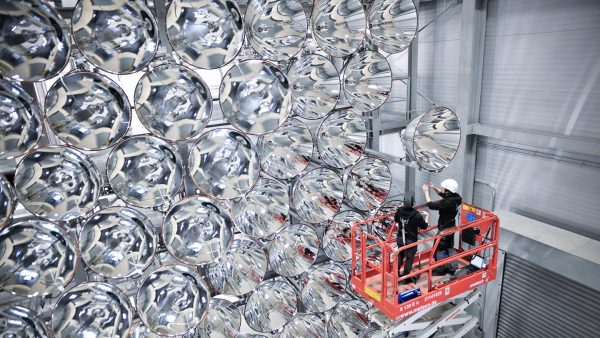Scientists in Germany recently turned on the “world’s largest artificial sun” a device made up of 149 Xenon short-arc lamps that can create about 10,000 times the amount of solar radiation we get on Earth. That’s enough to melt metal or fry pretty much any living thing.
Luckily, researchers don’t plan on using this powerful device, called “Synlight” to fry anyone, and have taken precautions to keep people well away from it while it’s switched on. Instead, they hope it will help them discover new, cost-effective ways of producing climate-friendly fuels like hydrogen.

Photo: DLR
The bright minds at DLR, the German Aerospace Center, believe that a field of adjustable mirrors could be used to focus sunlight into a very small and incredibly hot area to create a high-energy reaction where hydrogen is extracted from water vapor. Unfortunately, they don’t know exactly how to do that, so they’ve built Synlight to help them take experiment done in small laboratory to the next level.
When the honeycomb of 149 Xenon short-arc lamps is switched on and focused on a single 20-by-20 centimeter (8×8 inch) spot, it produces 10,000 times the amount of solar radiation that would normally shine on the same surface, and furnace-like temperatures of up to 3,000 degrees Celsius (5,432 Fahrenheit).

Photo: DLR
Synlight relies on the same type of Xenon short-arc lamps used in cinemas to simulate natural sunlight. But a very large cinema would only require one lamp, whereas this things features 149 of them spread across a surface of 45 feet high by 52 feet, all focusing their energy on a very small area. That’s one place you definitely don’t want to be when Synlight is on.
Hydrogen is the most common element in the universe, but pure hydrogen gas is apparently very rare here on Earth, so DLR hopes to use their “artificial sun” to come up with a cost-effective way to produce more of it. If successful, they hope to eventually be able to harness the sun’s natural energy instead of using a rig that requires as much electricity in four hours as the average four-person household uses in a year.

Photo: DLR
Scientists have long been trying to create hydrogen fuels in a cost-effective way, but all their attempts thus far – including artificial photosynthesis, seawater electrolysis, biomass reactions, etc. – have failed. Now it’s time to try with the sun, at least an artificial one, for now.
Hydrogen is considered the fuel of the future, because it burns without producing any carbon dioxide. It’s apparently more than worth spending two years and over 3.5 million euros building an artificial sun for.

Photo: DLR
I wonder what would happen if you stared into Synlight when it’s turned on. Maybe I’ll fly to Germany and find out. It might just win me one of those Darwin awards I’ve been wanting for so long…
Sources: Technology Review, Physorg






